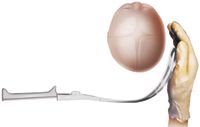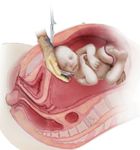Barton's forceps: An effective aid in cesarean deliveries
In a time when repeat cesarean deliveries are becoming more frequent, it can be difficult to deliver an infant when the vertex is floating high out of the pelvis.

Key Points
In a time when repeat cesarean deliveries are becoming more frequent, it can be difficult to deliver an infant when the vertex is "floating" high out of the pelvis. Often, maximal fundal pressure is not adequate and the physician needs to use a vacuum device such as the Kiwi or forceps to complete the delivery.
Lyman G. Barton, MD, designed forceps with a hinged anterior blade for use in vaginal deliveries when the fetal head is arrested in the transverse position at the pelvic inlet.1,2 Although this type of operative vaginal delivery is no longer part of obstetric practice, we have found Barton's forceps to be useful in delivery when the fetal head is in the high transverse position, which frequently is encountered during a cesarean delivery. This is particularly true in repeat cesarean deliveries through a low transverse incision on a woman with a thick abdominal wall.
First described by Megison, Barton's forceps were successfully used in 300 cesarean deliveries without reported complications.3

Once the hysterotomy has been performed and the membranes are ruptured, the operator confirms the transverse position of the head. We recommend first placing the fixed posterior blade. This is in contrast to the procedure described for vaginal delivery in which the anterior (hinged) blade is wandered into position first.


At this point, the operator palpates the position of the forceps on the head to confirm that the sagittal suture is oriented transversely between the blades. Traction now is applied, without rotation, along the long axis of the mother. Extraction of the fetus is assisted by fundal pressure. While guiding the head out of the incision, the vertex may be flexed by digital pressure on the bones converging at the posterior fontanel.
A Legacy of Excellence: Reflecting on the Final Print Edition of Contemporary OB/GYN
April 25th 2025Marking the end of an era and the beginning of a new chapter, the final print edition of Contemporary OB/GYN celebrates over 50 years of evidence-based guidance and unwavering support for clinicians.
Read More
